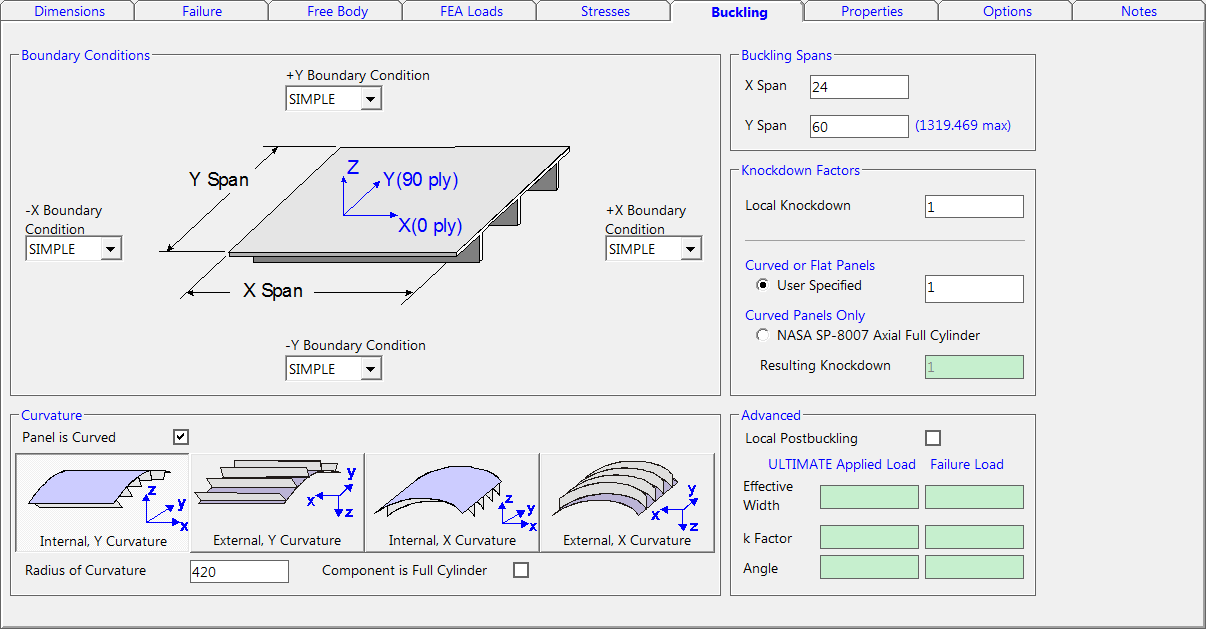

The Buckling tab contains options for buckling analysis.
The Boundary Conditions frame contains the assumed panel (overall) and stiffener buckling boundary conditions. For typical airframe panel bays, simple boundary conditions (default) on all four edges is appropriate. These boundary conditions do not affect the stress analysis or local buckling margins.
The Buckling Spans frame contains the X Span (length) and Y Span (width) of the panel (see diagram).
During FEM import, buckling spans will be automatically derived for each component. However, the user should use the FEM Viewer to verify the automated calculation of these values and manually overwrite if necessary. See Buckling Span Calculations and Show FEM Directions.
Impact of Buckling Spans on Analysis
The Curvature frame sets the orientation and radius of the curved panel. If the 'Component is Full Cylinder' check box is enabled, the transverse span is set to the full circumference. If the panel is curved, the panel pressure is ignored (assumed to be reacted in hoop) however, local pressure is still applied.
Important: Panel pressure is ignored for curved panels because the pressure load is assumed to be reacted in hoop (Ny).
During the FEM import, HyperSizer will attempt to define if the panel is curved. You can overwrite this manually by removing the checkmark in the Setup frame. You can also specify that a component is a full cylinder and whether the panel stiffeners are aligned longitudinally or transversely to the curvature. Again, based on the FEM’s element normals, HyperSizer will attempt to define the panel stiffener locations but you may overwrite its interpretation of your model.
You may also enter "knockdown factors" for either the full panel buckling analysis or for local buckling analyses. These factors are traditionally used in the aerospace industry to account for initial imperfections in panels and beams. Entering factors between 0 and 1 will "knockdown" the allowable buckling loads by this factor (i.e. a factor of 0.8 will reduce the allowable buckling load by 20 percent).
A component-based local knockdown factor can be defined. This factor is applied to all local buckling margins.
A panel buckling knockdown factor can be applied as well. Two options are available. First, a constant user-specified knockdown factor can be applied to both flat and curved panel buckling margins. Second, the SP-8007 knockdown factors can be applied for curved panels only. These knockdown factors are based on r/t ratio and were originally derived for unstiffened isotropic cylinders under pure compression.
